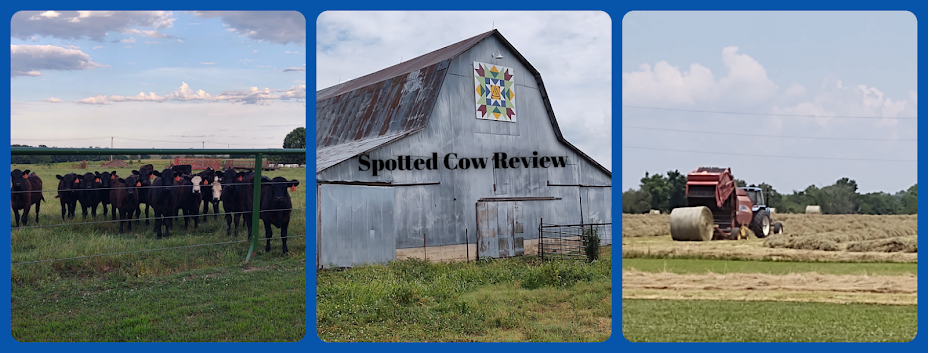I'm in the midst of a personal campaign to improve my health by losing weight and getting back into a regular exercise routine (besides my farm chores). At 60 years old, I think I'm running out of time to get this right!
According to a nutrition fact sheet from the
National Dairy Council, achieving a healthy weight is about three things:
- limiting the amount of calories in your diet
- getting enough exercise
- making smart food choices
Dairy products definitely fit into a balanced diet and offer a wide variety of regular,reduced-fat,low-fat and fat-free products to choose from to meet nutritional needs.
Peanut Butter Oat Biscuits, a recipe I found on the National Dairy Council website, is a perfect fit for my love of peanut butter,dairy and nutritional needs.
:

1/2 cup fat-free milk
1/3 cup fat-free Greek yogurt, honey flavored
1/2 cup rolled oats
1 cup whole wheat pastry flour
1/2 cup all purpose flour
2 teaspoons baking powder
1/2 teaspoon baking soda
1/2 teaspoon sea salt
3 Tablespoons cold butter, cut into small cubes (extra cold)
1/4 cup peanut butter
Melted butter for brushing on top of biscuits (optional)
Instructions:
Preheat oven to 400 degrees.
Whisk milk and yogurt together until a thick mixture forms and set aside.
Whisk together oats,flours,baking powder,baking soda and salt. Cut butter into flour
with a fork until the flour becomes crumbly.
Combine peanut butter and milk mixture in a separate bowl until fully combined.
Be careful to not over mix.
Place dough onto a lightly floured surface. Lightly knead the dough a few times.
Roll dough out into a 1 inch-thick disc; be careful not to overwork the dough.
Using a round cookie cutter/dough cutter,push down into dough and lightly twist.
Repeat until dough is used up and place on a baking sheet.
Brush the tops of each biscuit with a little melted butter, if desired.
Bake for 10-12 minutes until lightly golden brown. (use the lower over rack if not
brushing with butter.
Let cool on cooling rack for 5 minutes and serve warm with your favorite filling.
Filling suggestions: low-fat yogurt and berry mixture,butter,
fat-free cream cheese,jam,apple butter,honey,chocolate,
chocolate hazelnut spread, or more peanut butter
Serving Suggestions: Best served warm or re-toasted in the oven with apple butter or
cream cheese on top.
Yield: 9-12 biscuits
Helpful Hints: Store biscuits in an airtight container at room temperature for a
few days or freeze.












.jpg)
.jpg)
.jpg)
.jpg)
.jpg)

